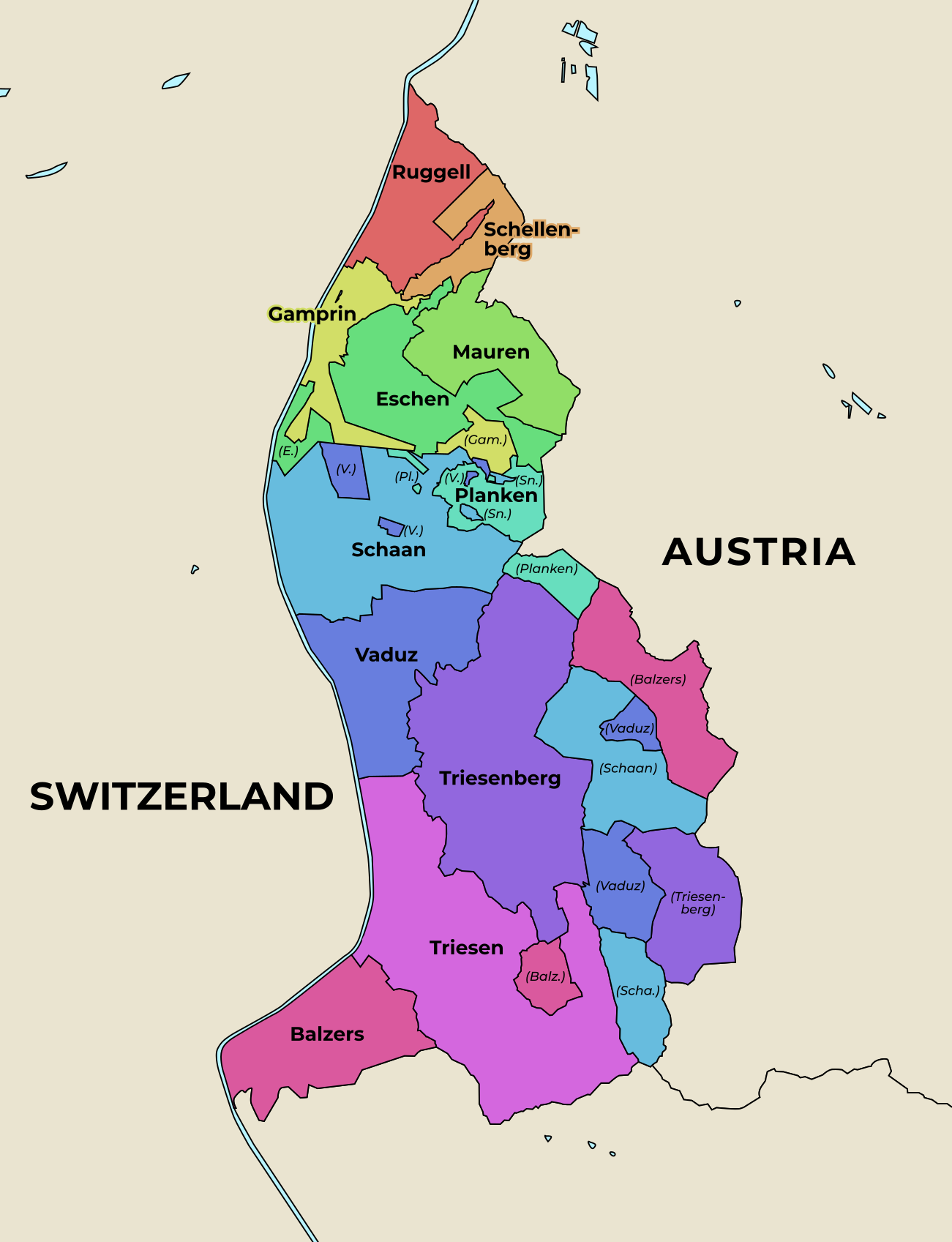Administrative Map of Liechtenstein


Marcus Rodriguez
Historical Geography Expert
Marcus Rodriguez specializes in historical cartography and geographic data analysis. With a background in both history and geography, he brings unique...
Geographic Analysis
What This Map Shows
The administrative map of Liechtenstein presents a clear and detailed visualization of the country's municipalities, which are pivotal in understanding its local governance structure. This small yet fascinating principality, nestled between Switzerland and Austria, consists of eleven municipalities, each with its own unique characteristics and administrative functions. The map not only delineates these municipalities but also serves as a window into the political and social organization of Liechtenstein.
Deep Dive into Liechtenstein's Municipalities
Liechtenstein is renowned for its compact size, measuring just about 160 square kilometers. However, it plays a significant role in regional governance and administration. The country's municipalities include Vaduz, the capital, as well as other notable areas such as Schaan, Balzers, and Eschen. Each municipality has its own local government, which manages various aspects of community life, from education to public safety.
Vaduz, for instance, is not only the political heart of Liechtenstein but also a cultural hub, home to the national parliament and several museums. Interestingly, Vaduz is also known for its vineyards, showcasing how even in a small area, agriculture plays a role in local identity. Schaan, the largest municipality by population, offers a more urban environment and serves as an economic center, reflecting the diverse character of Liechtenstein's municipalities.
What's fascinating is that Liechtenstein's administrative divisions are not just a matter of governance; they are integral to the country's social fabric. With a population of about 39,000, the municipalities foster a close-knit community where local traditions and social events thrive. Each municipality hosts various festivals that celebrate local culture, such as the Schaan Town Festival or the Balzers Wine Festival, providing insight into the unique traditions that enrich Liechtenstein's heritage.
The municipal structure also allows for efficient local governance. With relatively small populations, local leaders can engage directly with their constituents, creating a strong sense of community and responsiveness to residents' needs. This model of governance highlights the importance of local administration in maintaining social cohesion and promoting civic engagement.
Regional Analysis
Analyzing the municipalities shown on the map reveals intriguing contrasts. For instance, Vaduz and Schaan are more urbanized, with higher population densities and more developed infrastructure. In contrast, municipalities like Balzers and Eschen retain a more rural character, with expansive green spaces and agricultural land. Interestingly, Balzers is known for its historical sites, such as the Balzers Castle, which attracts tourists and contributes to the local economy.
The map also highlights the geographical distribution of the population across the municipalities. While Vaduz and Schaan have a higher concentration of residents, smaller municipalities like Planken have a sparse population, resulting in a different pace of life. Each municipality has its own charm, and they collectively contribute to the identity of Liechtenstein as a whole.
Moreover, the geographical positioning of these municipalities influences their economic activities. For example, municipalities bordering Switzerland, like Ruggell, benefit from cross-border economic ties, leading to collaborative projects and shared resources. This interconnectedness is a crucial aspect of Liechtenstein's economic strategy, particularly in sectors like finance and tourism.
Significance and Impact
Understanding the administrative map of Liechtenstein is vital for grasping the intricacies of local governance and social dynamics in this small nation. The municipalities play a crucial role in delivering public services, fostering community spirit, and promoting sustainable development. As Liechtenstein faces modern challenges such as urbanization and climate change, the municipalities are at the forefront of implementing policies that address these issues.
Interestingly, as global trends shift towards more localized governance models, Liechtenstein's approach to municipal administration could serve as a case study for other countries. The emphasis on local decision-making and community involvement promotes resilience and adaptability, essential traits in today's rapidly changing world.
Looking ahead, the future of Liechtenstein's municipalities will likely involve further integration of digital technologies to enhance governance and community engagement. As these areas continue to evolve, they will play a pivotal role in shaping the country’s identity and ensuring that its rich cultural heritage is preserved for future generations. Ever wondered how small nations can teach larger countries about local governance? Liechtenstein is a perfect example of this principle in action.
Visualization Details
- Published
- September 8, 2025
- Views
- 62
Comments
Loading comments...